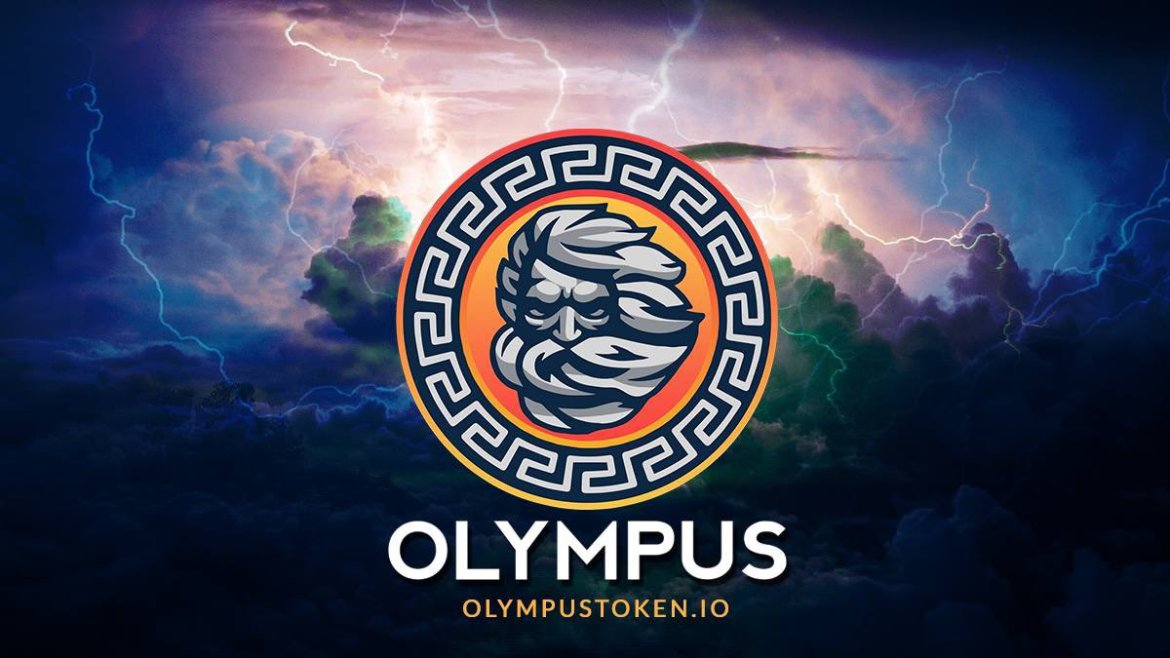
OHM is a decentralized backed digital currency controlled by its token holders and governed as a decentralized autonomous organization (DAO).
Its goal is to build a policy-controlled decentralized currency that can function as a global unit-of-account and medium-of-exchange currency.
According to the project plan, Olympus sees other assets as inadequate: stablecoins suffer from inflation at the hands of central banks, and Bitcoin or Ether are at risk of price manipulation or too volatile to function as money.
Olympus was created by a pseudonymous account called Zeus. The real identity of Zeus is unknown, although rumors persist that he is a young man in his late teens or early twenties. Zeus is known as a methodical and analytical person who laid out and communicated a clear vision for Olympus despite his presumably young age and anonymity.
Olympus itself is run as a DAO and is widely seen as one of the most dedicated and influential communities in the cryptocurrency space. Although not following a dedicated roadmap, Olympus has a clear goal and constantly delivers product improvements. Its most significant update to date will be the migration to Olympus V2, which will see the installation of on-chain governance reflected in the smart contracts and the launch of Olympus on a host of other layer-one and layer-two blockchains.
How Does Olympus Work?
There are two main ways to engage with the Olympus protocol: staking and bonding.
Staking is the primary value accrual mechanism of Olympus. Users stake their OHM to earn rebase rewards, meaning their initial stake auto-compounds at fixed time intervals (every eight hours). These rewards are paid from revenue the protocol incurs from selling bonds and vary according to the amount of OHM staked and the reward rate set by the DAO’s policy team.
Staking is a passive investment strategy with a long-term horizon, as users are rewarded for maximizing the time they stay staked. The high APY of Olympus incentivizes stakers to focus on increasing their amount of OHM instead of the dollar value of OHM, since a user’s constantly increasing stake of OHM can outpace their potential dollar value losses.
Bonding is the protocol’s second value accrual strategy and is considered its biggest innovation in the decentralized finance space. Through bonding, the protocol acquires its own liquidity and reserve assets that it uses to become a decentralized backed digital currency.
Bonding is an active, short-term strategy where users acquire OHM directly from the protocol in exchange for various assets like stablecoins, ETH, or liquidity tokens. The protocol sells OHM at a discounted rate with a five-day vesting period. After five days, users can either stake their acquired OHM to increase their share or sell them on a secondary market to pocket the discount rate as profit (assuming stable prices and disregarding gas fees). The protocol receives stablecoins or other assets, allowing it to build up a treasury of different assets that back the OHM it issues.
What Makes Olympus Unique?
Olympus is regarded as one of the most important innovations in the decentralized finance space in 2021. A testament to this is its massive growth from zero to over $4 billion in market capitalization in the space of a little over six months.
Olympus pioneered the now-ubiquitous mechanism of protocol-owned liquidity, where a protocol acquires its own liquidity instead of relying on liquidity providers and yield farming rewards as incentives. The rationale behind this is that in an event with massive volatility, the protocol will not have to rely on the benevolence of liquidity providers but can ensure liquid markets.
In addition, the acquisition of assets like stablecoins and Ether allows Olympus to create a credible price floor below which the protocol will buy back issued OHM. This works akin to fractionalized reserve banking, where banks back their liabilities with assets, thereby creating trust and stability for their customers.
Olympus dubs the protocol-owned stablecoins risk-free value, as their value should never fall below $1. The protocol also holds other assets in its treasury, which stands at over $800 million at the time of writing. This price floor and risk-free value were key components in the protocol’s early stages to ensure trust.
Another innovation by Olympus is its staking mechanism, which is a key part of its flywheel that allows the protocol to grow rapidly. The high APY serves as an incentive mechanism to keep as many OHM as possible out of circulation and create a culture of focusing on the protocol’s long-term growth and a user’s share in it over-focusing on price. While the initial APY was north of 100,000%, it has now come down to “merely” 7,000% and is scheduled to gradually decrease in 2022. The protocol’s massive treasury ensures that stakers face a sort of “reverse pyramid scheme,” where each user has an incentive to maximize their holding of OHM and control the protocol’s treasury.
Olympus coined the (3,3) meme, a nod to the game theory behind its mechanism that succinctly sums up the incentives actors have when engaging with the protocol. All users have the highest game-theoretical payout (3,3) when they stay staked, as this keeps OHM out of circulation (currently, 90% of OHM is staked) and increases a user’s share of the entire supply as others drop out. It is generally seen as one of the “strongest memes” in the crypto space since HODL.
Reference: https://coinmarketcap.com/alexandria/article/what-is-olympus-ohm

Comments